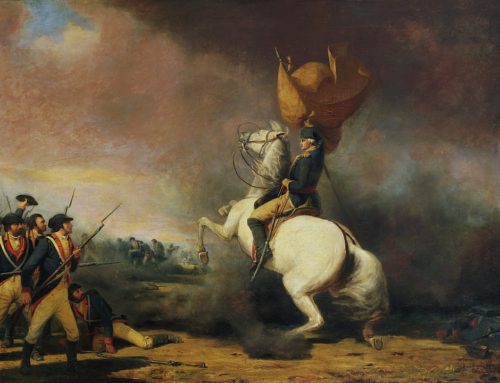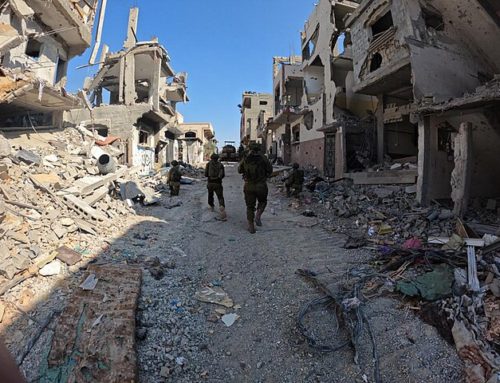“Dachau, 1933-1945”, will stand out for all time as one of history’s most gruesome symbols of inhumanity. There our troops found sights, sounds, and stenches of horror beyond belief, cruelties so enormous as to be incomprehensible to the normal mind. Dachau and Death were synonymous.” Col. William W. Quinn, 7th U.S
“The day is over, April 29,1945. For the rest of my life I will celebrate this day as my second birthday. The day I received the gift of my new life.” Diary of an inmate
“National Socialism and Christianity are irreconcilable.” Martin Borman, Hitler’s Secretary
I recently returned from a two-week trip that sought to replicate the important battle engagements of Easy Company of the 101st Airborne Division. Our group of some twenty-five people was stimulated by the presence of two members of Easy Company, Buck Compton and Don Malarkey, as well as the youthful enthusiasm of our teen-aged members who sought constantly to improve their extensive knowledge about World War II. Irrespective of age, all of us felt that Dachau should remain as a testament of the inhumanity of man
Dachau, established in March 1933, remains a symbol of inhumanity. Located outside of Munich, it served as a death camp until April 29, 1945. Over that time span, almost 250,000 prisoners were transported there from some thirty countries–Russia, Poland, Czechoslovakia, France, Holland, Germany, and other countries under Nazi occupation. Given the large number of people involved in the transportation of victims, the manufacture of the crematoriums, the employment of slave labor to produce munitions, I remain convinced that a broad number of Germans were aware of its horrors. One of its prisoners, Dr. Sigmund Raschler, conducted “medical experiments” upon Dachau inmates until his arrest in 1944. In his attempt to receive a Ph.D. he wrote his thesis on his experiments and sent them to leading German universities. Raschler for some reason antagonized SS Chief Heinrich Himmler and was imprisoned for “kidnapping babies.” He was shot in the back of the head three days before the camp was liberated in order to silence him.
When the camp opened, only known political opponents of the National-Socialists were interned. Social Democrats, Communists, and Monarchists who passionately opposed each other before 1933 found themselves together behind barbed wire. By 1939 the concentration camps were filled with a broader group—Jews, Jehovah Witnesses, homosexuals, racial inferiors, resistance leaders, and even clergymen who resisted the political coercion of the churches. That is, the goal of ardent Nazis was to destroy Christianity in Germany, and substitute the old paganism of the early tribal German gods and the new paganism of the Nazi extremists.
I am going to paraphrase the comments of the Lutheran Pastor Martin Niemoller who was imprisoned in Dachau. That is, Martin Niemoller who risked his life to oppose the Nazis would frequently end his speeches or sermons with the following thoughts.
“When the Nazis arrested the Communists, I said nothing; after all I was not a Communist. When the Nazis arrested the labor union activists, I said nothing for I was not a union activist. When the Nazis arrested the Jews, I said nothing for I was not a Jew. Then they came for the Catholics, and I did not speak up because I was a Protestant. When the Nazis arrested me, there was nobody left to speak up for me.”
Over its twelve- year existence, Germany became dependent upon the production quotas of its concentration inmates. Production goals and quotas were maintained at the SS main office in Berlin. Camp officers were encouraged “to replace sick prisoners” with healthy ones in order to meet quotas
Dachau was an important prototype for future concentration camps. For example, it was the first camp to use a crematorium in order to deal effectively with bodies. Heinrich Himmler in his desire to develop SS science, employed SS physicians to use prisoners as human guinea pigs. For example, about 1100 prisoners were infected with malaria in order to find a cure for the disease. Dr. Sigmund Raschler introduced decompression champers to simulate conditions to which prisoners were exposed when their planes were destroyed at great heights. Prior to killing prisoners, the Germans confiscated artificial limbs, glasses, shoes, and clothing.
The first free distribution of food by the American Army had catastrophic results: hundreds died, as their systems could no longer digest such an abundance of unfamiliar food. Also to check the typhus epidemic, the Americans placed the camp under the strictest of quarantines.
In the mad scramble to hide the horrors of Dachau, the SS forced thousands of prisoners on a death march where many were shot when they could no longer walk. Nevertheless, when the American army liberated the camp there were some 7,000 prisoners. The joy of the prisoners was infectious with many rushing to the roll-call square. The individual national flags of the prisoners, which had been secretly prepared, were hoisted alongside the white flag of surrender.



